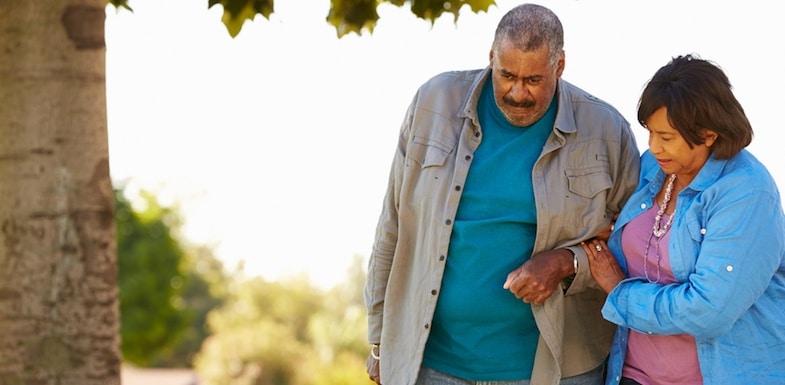Book an Appointment
Learn how Regen Doctor is assisting patients in living life to the fullest.
Our feet are arguably the hardest working parts of our body. With 25% of the bones in our body, they support our weight and move us through the world every day. When foot pain strikes, the impact on our lives (and the lives of those around us) can be considerable. Here’s what you should know about potential causes of pain in the feet, along with treatments.
Foot pain is a very common pain condition. Not only does each foot have 26 bones, it also has 33 separate joints. In addition, there are also hundreds of ligaments, muscles, and nerves.
With such a complex structure and daily weight-bearing, pain in the feet is unfortunately common. Even if it is common, you don’t have to suffer in pain. There are treatments that can help with your pain.
The causes of this type of pain can be divided into two categories: structural or neuropathic.
Structural foot pain deals with a breakdown of the structures in the foot (e.g., a fracture of a bone. Neuropathic foot pain occurs due to damage to the nerves.
There are many different structures of the foot, and plenty of opportunities for structural foot pain in our daily lives. Here are eight of the most common structural causes of this type of pain.
Bone spurs, or osteophytes, are bony projections that can develop along the edges of the bones in the feet.
These spurs are typically the result of arthritis. They can be very irritating to surrounding nerves and can cause a significant amount of pain.
Stress fractures can occur in any person, regardless of activity level. Most often, stress fractures occur due to sports injury or other trauma.
Stress fractures are tiny fractures within the bones of the feet and are typically caused by overuse or improper physical training.
Achilles tendinitis is an inflammation of the Achilles tendon, which is located just above the heel.
This condition is usually the result of participation in sports that utilize the ankles and calf muscles significantly, such as running, dancing, and playing basketball.
Bursitis can occur in any joint in the body. In the foot, there are 33 joints to choose from.
Bursitis is a painful inflammation in the fluid-filled sacs – the bursae – that help cushion movement in the joint.
Osteoarthritis is caused by the breakdown and eventual loss of cartilage in the joints and typically occurs in older individuals.
Rheumatoid arthritis is a disorder in which the body’s immune system attacks normal joint tissues, resulting in severe pain and deformities.
When excess pressure is placed on the big toe (by very pointy or too-small shoes, for example), the big toe begins to lean towards the second toe.
The lean begins to produce a painful bony knob on the inside of the foot that can also be present on the outside if the pinky toe leans towards its neighbor.
Plantar fasciitis is the most common cause of heel pain. The heel connects to the toes by a thick band of tissue. This can become inflamed and incredibly painful.
Pain in your feet can also be neuropathic. Common neuropathic causes of pain include the following:
Regardless of the cause, there are a variety of treatments that can work together to help relieve your pain.

Just as the causes of pain can be divided into structural and neuropathic, so, too, can the treatments.
Structural treatments of pain in your feet generally start with rest. In some cases, this may be all you need to give your feet a break and ease the pain.
If further treatment is necessary to relieve pain, your doctor may start by prescribing non-steroidal anti-inflammatory drugs (NSAIDS) like ibuprofen and send you home with a splint or a cast. Physical therapy can help stretch and strengthen injured ligaments and tendons.
For more serious and intractable foot pain, steroid injections may provide relief before exploring surgical options. Surgery may be necessary in rare, severe cases.
Neuropathic pain may also incorporate elements of structural foot pain relief (e.g., rest, ice, and braces or support), but other treatments may be necessary. These might include:
If your chronic foot pain does not respond to more conservative treatments, your doctor may recommend spinal cord stimulation. Spinal cord stimulation (SCS) is often described as a “pacemaker for pain” and uses groundbreaking technology that works by introducing an electrical current into the epidural space near the source of chronic pain impulses.
Under a local anesthetic and minimal sedation, your doctor will first place the trial SCS leads into the epidural space. The SCS lead is a soft, thin wire with electrical leads on its tip. This is placed through a needle inserted into the epidural space.
The trial stimulator is typically worn for a five to seven day test period, with the lead taped to your back and connected to an exterior stimulating device. If the trial successfully relieves your pain, you can decide to undergo a permanent SCS implant.
With both neuropathic and structural pain in the feet, the utilization of multiple treatment
If you have any questions or are simply looking for more information please contact us and our friendly team will be happy to answer your questions and help in any way we can.
